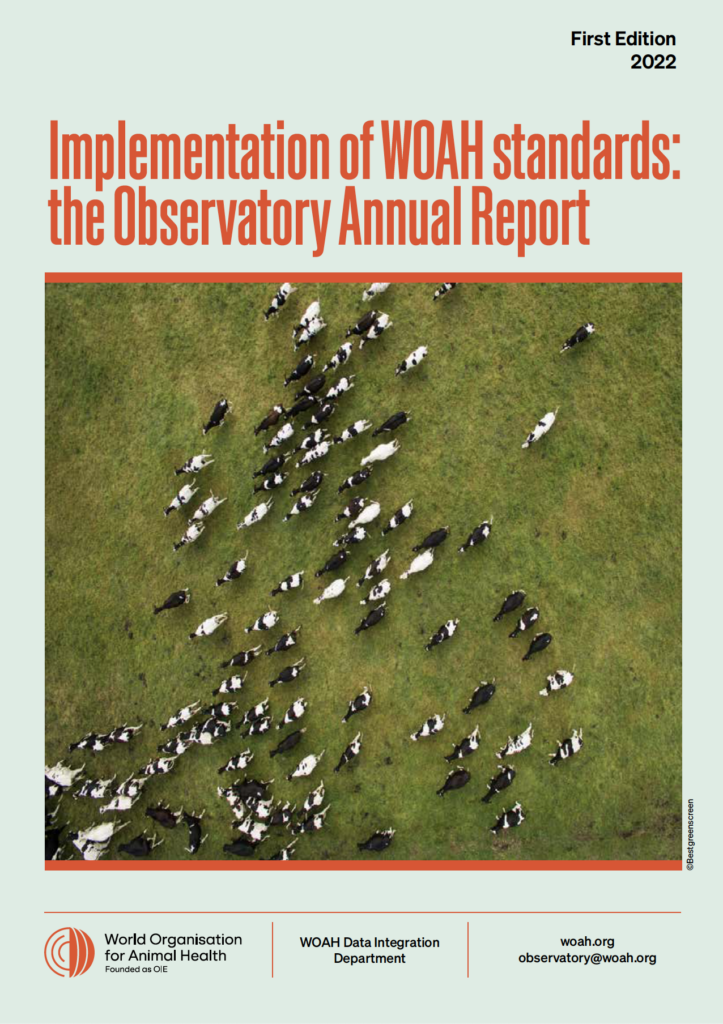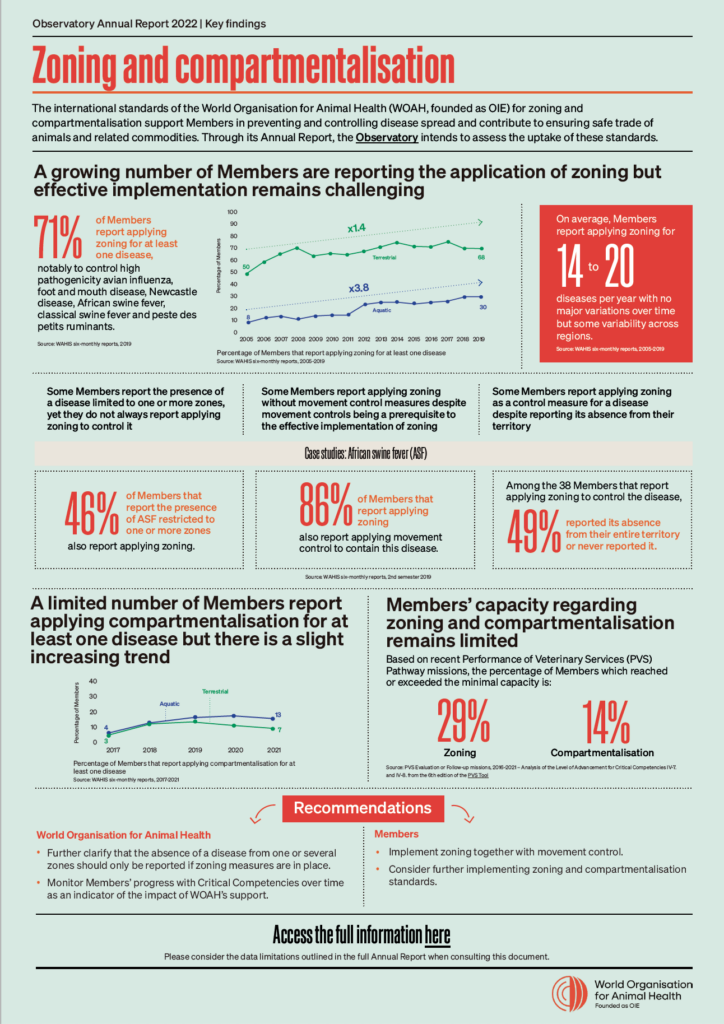Monitoring zoning and compartmentalisation
The international standards of the World Organisation for Animal Health (WOAH) for zoning and compartmentalisation support Members to prevent and control disease spread and contribute to ensuring safe trade of animals and related commodities. Monitoring zoning and compartmentalisation can bring valuable insights for both WOAH and WOAH Members.

Through its Annual Report, the Observatory presents a global overview of the level of uptake of WOAH standards that relate to zoning and compartmentalisation.
How can you access our zoning and compartmentalisation analysis?
The zoning and compartmentalisation dashboard presents the results of the analysis in an interactive way.
To discover the results of our zoning and compartmentalisation analysis, access the full report as well as the one-page executive summary.

First Edition, 2022

Executive summary
How did we monitor the implementation of zoning and compartmentalisation standards?
Monitoring the implementation of standards related to zoning and compartmentalisation requires building and analysing indicators using various data sources.
What zoning and compartmentalisation indicators did we use to monitor the implementation of these standards?
Several indicators made it possible to monitor the implementation of zoning and compartmentalisation standards, among them:
Number and percentage of Members reporting zoning as a control measure
Average number of diseases for which zoning has been reported as a control measure
Number of Members that have reported the presence of a given disease / infection / suspected disease limited to one or more zones
Percentage of Members that apply movement control within their territory, of those that apply zoning as a control measure for a given disease
Percentage of Members that apply zoning as a control measure, of those that have reported the presence of a disease/infection/suspected disease limited to one or more zones
Number of Members that have reported the presence of a disease / infection / suspected disease limited to one or more zones AND that apply the key control measures of zoning and movement control AND that have self-declared freedom or have official recognition for that disease in a zone
Number of Members reporting compartmentalisation as part of their disease control measures
Performance of Veterinary Services regarding zoning and compartmentalisation, as assessed by the PVS Tool:
– Percentage of Members that have been assessed with a Level of Advancement of 3 or more for each of the two PVS Critical Competencies directly relevant to zoning and compartmentalisation (IV-7 Zoning and IV-8 Compartmentalisation)
– Percentage of Members that have been assessed with a Level of Advancement of 3 or more for both PVS Critical Competencies directly relevant to zoning and compartmentalisation (IV-7 and IV-8)
Number of WOAH Members reporting regionalisation related to animal health in WTO annual reports on implementation of regionalisation
What data sources did we use to build zoning and compartmentalisation indicators?
Five main data sources made it possible to build the monitoring indicators:
